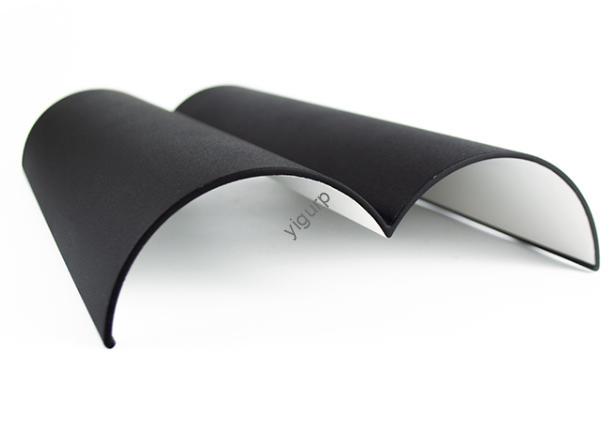Bending molding is a key process in sheet metal processing that shapes materials into desired angles and forms using pressure. It’s popular because it’s cost-effective, быстрый, and doesn’t require mold opening—perfect for both prototyping and mass production. But to get the best results, choosing the right material is crucial. This guide breaks down the top materials for bending molding, их профессионалы, Использование, and key considerations to help you make informed decisions.
An Overview of Bending Molding: Как это работает
Before diving into materials, let’s quickly understand how bending molding operates. The process relies on Пластическая деформация—applying pressure to a sheet metal until it bends without breaking. For success, two factors matter most: the material’s пластичность (its ability to stretch without cracking) and proper bending parameters (like height and radius).
A basic rule for bending height: it should be at least 2× the material’s thickness + the bending radius. Например, if you’re using a 2mm thick steel sheet with a 3mm bending radius, the minimum bending height is 2×2 + 3 = 7mm. This prevents twisting during forming. Также, the bending radius must be larger than the material’s minimum bending radius (a value that varies by material) to keep the bent part strong.
Top Materials for Bending Molding: Плюс, Использование, and Data
Not all materials work for bending molding—only those with good ductility. Below are the most common options, organized with key details to help you compare.
| Материал | Ключевые свойства | Minimum Bending Radius (for 1mm thick sheet) | Типичные приложения | Реальный случай |
| Сталь | Высокая сила, бюджетный, Хорошая пластичность | 1.5мм | Construction metal parts, потребительская электроника, Автомобильные рамки | A car manufacturer uses 1.2mm thick steel sheets to bend door frames. The parts handle daily wear without bending or breaking, and steel keeps production costs 30% lower than using titanium. |
| Алюминий | Легкий вес (1/3 Вес стали), коррозионная устойчивость, Герцоги | 1.0мм | Транспорт (велосипеды, Запасные части самолета), упаковка (алюминиевые банки), открытые светильники | A bike brand uses 0.8mm aluminum sheets to bend handlebars. The lightweight material cuts the bike’s total weight by 15%, and its corrosion resistance means the handlebars don’t rust in rain. |
| Медь | Отличная электрическая проводимость, Высокая пластичность, податливый | 0.8мм | Electrical connections (провода, круговые платы), сантехнические детали | An electronics company bends 0.5mm copper sheets into connectors for smartphones. The copper’s conductivity ensures fast signal transfer, and its ductility lets the connectors fit into small phone casings. |
| Титан | Ультра-высокая сила, коррозионная устойчивость (even in chemicals), биосовместимый | 2.0мм | Аэрокосмическая (rocket parts), медицинские устройства (имплантаты), морское оборудование | A medical firm uses 1.0mm titanium sheets to bend hip implants. Titanium’s strength supports body weight, and its biocompatibility means it doesn’t react with human tissue. |
Key Factors to Consider When Choosing Bending Molding Materials
Choosing a material isn’t just about its properties—you need to match it to your project’s needs. Here are four critical factors:
- Требования к применению: If your part needs to conduct electricity (like a wire connector), медь лучший выбор. Для легких деталей (like airplane components), алюминий или титан works better. For low-cost, высокопрочные детали (like construction brackets), сталь Идеально.
- Условия окружающей среды: Will the part be exposed to water or chemicals? Алюминий и титан сопротивляться коррозии, so they’re great for outdoor or marine use. Сталь may need a coating (like paint or zinc) Чтобы предотвратить ржавчину.
- Cost and Availability: Сталь is the cheapest and most easy-to-find option—perfect for large-scale production. Титан is expensive (about 5× the cost of steel) but worth it for high-performance parts (Как аэрокосмические компоненты).
- Bending Difficulty: Медь и алюминий are easy to bend—they require less pressure and are less likely to crack. Сталь и титан are harder, so you may need specialized equipment (like a high-pressure bending machine) для толстых листов.
Yigu Technology’s Perspective on Bending Molding Materials
В Yigu Technology, we focus on matching clients with the right bending materials to balance performance and cost. For most consumer goods (like electronics cases), Мы рекомендуем алюминий—it’s lightweight, коррозионная устойчивость, и рентабельный. Для промышленных частей (like construction beams), сталь is our go-to for its strength and low cost. Для высококлассных проектов (как медицинские имплантаты), Мы используем титан to meet strict safety and durability standards. We also help clients optimize bending parameters (like radius and height) to reduce waste—ensuring every part meets quality requirements.
FAQ About Materials for Bending Molding
1. Can I use stainless steel for bending molding?
Да! Stainless steel is a type of steel with added chromium, сделать его более устойчивым к коррозии. It has good ductility, so it’s great for parts like kitchen sinks or outdoor furniture. Its minimum bending radius is about 1.8mm (for 1mm thick sheets).
2. Is it possible to bend very thin sheets (0.1мм толщиной) of these materials?
Да, but you need to be careful. Тонкие простыни (like 0.1mm aluminum or copper) are easy to bend but may wrinkle. Use a bending machine with soft jaws (to avoid damaging the sheet) and keep the bending radius small (НАПРИМЕР., 0.5мм для алюминия) Для достижения наилучших результатов.
3. Which material is best for bending parts that need to be painted?
Сталь лучший выбор. It adheres well to paint and coatings, and the paint adds extra rust protection. Aluminum can also be painted, but it may need a primer first to help the paint stick. Copper and titanium are less commonly painted, as their natural properties (like conductivity or biocompatibility) may be affected.
